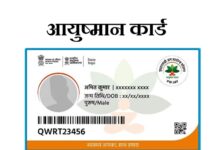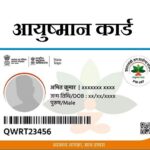MUMBAI : Life Insurance Corp. of India (LIC) plans to create a separate digital vertical to regain shrinking market share by reducing its dependence on an army of agents, capitalize on the digitalization trend and woo investors post its initial public offering.
“We want to have an entire vertical which will be digital. This will be apart from our plan to review and refurbish our existing online channel,” LIC chairman M.R. Kumar told a pre-IPO meeting on Monday.
Between December 2020 and January 2022, LIC’s market share fell from 68.05% to 61.4% in terms of premium income. The 55-year old state-run insurer lost about 13 percentage points in market share to private life insurers since June 2020, when it had 74.04% market share.
This is primarily due to LIC’s dependence on agents, who found it difficult to approach prospective customers amid lockdowns following the outbreak of the pandemic in 2020.
LIC’s new business premium income in April-December fell by 3.07% from a year ago to ₹1.26 trillion, while private insurers grew their new business income by 29.8% to ₹79,216.84 crore, according to data released by the insurance regulator.
LIC’s 1.36 million agents generate over 90% of premium income, while bancassurance and other channels contribute the rest.
“The (proposed) digital vertical will take into consideration everything that a customer wants or expects from online. If the customer wants to be assisted online, he can get it from the coming digital vertical. If the customer wants to buy a protection product completely online, he can avail it from the proposed digital vertical. We are hoping to launch it soon,” Kumar said.
For strengthening its digital play, LIC may need to raise growth capital, for which it will reach out to the government and existing investors who would come in during the IPO and post its mega listing, which is expected in mid-March, according to the chairman, whose term was recently extended by a year.
To be sure, LIC already has a digital presence. However, not even 1% of its sales happen through its website. “Two things are happening. One is on the collection of premium and other things, whereby people are increasingly getting digital. On insurance sales, marketing, and new policy launches part, we have an online channel which we are going to relook at, and we are trying to refurbish it to make it more convenient,” Kumar said.
To sustain its sales during the pandemic, LIC introduced a digital app for its agents called ANANDA (Atma Nirbhar agents new business applications), where an agent can seamlessly call the customer, enter the customer’s details in the app and then send a link to them to pay the premium.
“We have also tied up with PolicyBazaar to help policyholders compare products. Even medical verification reports can be done through our online video consultation. So, that digital capability is also being reviewed,” Kumar said.
On the insurer’s stake in IDBI Bank, Kumar said the company would hold on to some stake in the bank due to its bancassurance network.
LIC has reduced its stake to 49% now, but, according to Kumar, in lieu of LIC’s investment, IDBI Bank has helped LIC procure sales through the bancassurance channel.
For FY21 and the six months ended 30 September, bancassurance partners procured ₹1,900.76 crore and ₹505.82 crore, respectively, of LIC’s new business premium for its individual products, which was 3.36% and 2.31%, respectively, of the firm’s total new business for individual products.
“IDBI Bank has been a strong bancassurance partner, and in the post-listing scenario, as we look at strengthening our bancassurance channel, our association with IDBI Bank is going to play a crucial role. Therefore, we might stick on to some stake in IDBI Bank (which would be lower than 49%) to able to continue with our partnership,” Kumar said.
Above all, a strong digital platform may help LIC curb its rising expenses, which have risen from ₹28,331.6 crore in FY19 to ₹34,425.88 crore in FY20 to ₹35,162.21 crore in FY21. According to its IPO prospectus, the total expense for the six months ended 30 September was ₹18,906.36 crore.
Both LIC’s loss in market share and high expenses can be attributed largely to the huge commission LIC pays its army of agents. For FY21 and the six months to September, LIC’s operating expenses related to insurance business to premium ratio (as a percentage of premium) was 8.66% and 10.08%, respectively.
Things may change for LIC if the insurer succeeds in lowering its dependence on agents .















